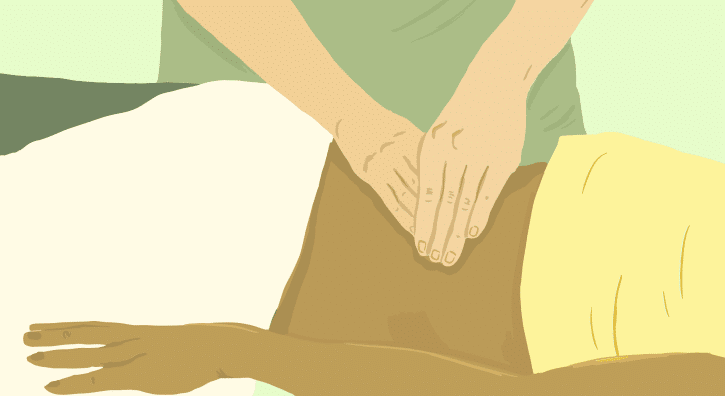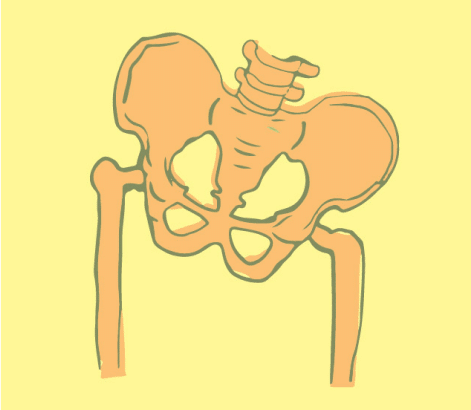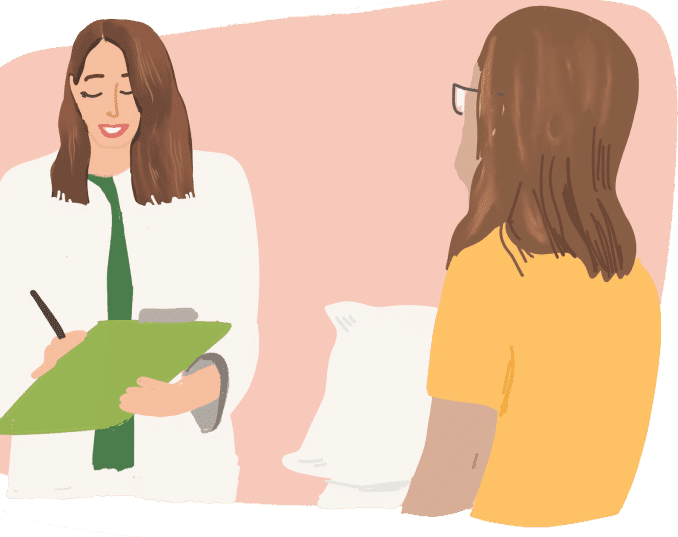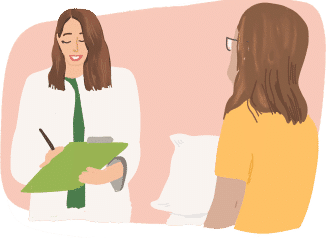

When sexual dysfunction arises—whether it’s problems with arousal, reduced libido, lack of orgasm, or discomfort during intimacy—it can be deeply distressing and difficult to talk about. What is less commonly recognized is how pivotal the pelvic floor muscles are to these experiences. These internal muscles support essential sexual functions such as maintaining erections and enhancing the pleasurable contractions associated with orgasm. Under normal conditions, they enhance sexual gratification, but dysfunction—such as tightness, weakness, or poor coordination—can disrupt these processes and lead to pain, numbness, or emotional disconnection. Left unaddressed, these issues may interfere with confidence and connection in intimate relationships. Pelvic floor physical and occupational therapy offers a compassionate and clinical solution, addressing muscular dysfunction with tailored interventions that can restore function, sensation, and intimacy over time.
The Facts
- Sexual pain is incredibly common, affecting about a third of women before menopause—but it remains one of the least discussed and least treated issues in women’s health.
- Men under 40 are not immune to erectile dysfunction; statistics show that between 15% and 72% have experienced these symptoms, challenging age-related stereotypes.
- In men aged 40 to 70, over half—approximately 52%—report issues with erectile function that affect both personal intimacy and mental health.
- Post-prostate surgery, erectile dysfunction becomes a primary concern, with nearly 80% of patients reporting impaired sexual function after recovery.
- Around 60% of menopausal women admit to avoiding the topic of sexual discomfort with their doctors, delaying treatment and prolonging their distress.
- Lubrication issues and vulvar irritation are frequently caused by medications such as hormonal contraceptives and acne therapies—effects often overlooked.
- Nearly two-thirds of women continue to experience painful sex as late as 18 months postpartum, emphasizing the need for long-term postpartum support.
When sexual dysfunction arises—whether it’s problems with arousal, reduced libido, lack of orgasm, or discomfort during intimacy—it can be deeply distressing and difficult to talk about. What is less commonly recognized is how pivotal the pelvic floor muscles are to these experiences. These internal muscles support essential sexual functions such as maintaining erections and enhancing the pleasurable contractions associated with orgasm. Under normal conditions, they enhance sexual gratification, but dysfunction—such as tightness, weakness, or poor coordination—can disrupt these processes and lead to pain, numbness, or emotional disconnection. Left unaddressed, these issues may interfere with confidence and connection in intimate relationships. Pelvic floor physical and occupational therapy offers a compassionate and clinical solution, addressing muscular dysfunction with tailored interventions that can restore function, sensation, and intimacy over time.
The Facts
- Sexual pain is incredibly common, affecting about a third of women before menopause—but it remains one of the least discussed and least treated issues in women’s health.
- Men under 40 are not immune to erectile dysfunction; statistics show that between 15% and 72% have experienced these symptoms, challenging age-related stereotypes.
- In men aged 40 to 70, over half—approximately 52%—report issues with erectile function that affect both personal intimacy and mental health.
- Post-prostate surgery, erectile dysfunction becomes a primary concern, with nearly 80% of patients reporting impaired sexual function after recovery.
- Around 60% of menopausal women admit to avoiding the topic of sexual discomfort with their doctors, delaying treatment and prolonging their distress.
- Lubrication issues and vulvar irritation are frequently caused by medications such as hormonal contraceptives and acne therapies—effects often overlooked.
- Nearly two-thirds of women continue to experience painful sex as late as 18 months postpartum, emphasizing the need for long-term postpartum support.
Symptoms
*Sexual Dysfunction in people with a penis
- Erectile problems can manifest as weak erections, an inability to stay firm, or early climaxing.
- Some notice a dramatic reduction in the force or quantity of ejaculation.
- Climacturia—urine leakage during orgasm—can be subtle but indicative of deeper issues.
- Pain after sexual release is frequently reported in the scrotum, penis, or perineum.
- Color changes or skin mottling near the groin may signal circulatory or pelvic floor issues.
Postpartum Sexual Dysfunction
- Nursing reduces estrogen, contributing to vaginal dryness and discomfort during intimacy.
- Healing from childbirth-related injuries may cause persistent perineal pain.
- Some women find they can’t climax as easily or feel less sensation than before.
- Urine may leak during or after sexual activity without warning.
- Ongoing pain during sex post-birth is distressing and deserves clinical attention.
*Sexual Dysfunction in people with vulvas/vaginas
- Lack of moisture or reduced lubrication can result in a painful, raw sensation during arousal.
- Penetrative discomfort can show up at the entrance, internally, or as a constant ache throughout sex.
- Some report that clitoral stimulation feels painful rather than pleasurable.
- After intercourse, a burning or irritated feeling may last for hours.
- Reduced ability to climax or missing orgasm altogether can develop over time.
- Urinary leakage during sex may be an indicator of pelvic support issues.
- Involuntary urination at orgasm may also occur and is known as climacturia.
Menopausal Sexual Dysfunction and Post-gynecologic cancer treatment
- Hormone depletion during menopause can leave vaginal tissues dry and fragile.
- Penetration often becomes increasingly uncomfortable or intolerable.
- Soreness post-sex may be long-lasting, even without intense physical activity.
- Orgasmic intensity may fade or disappear as hormone and nerve patterns shift.
Symptoms
*Sexual Dysfunction in people with a penis
- Erectile problems can manifest as weak erections, an inability to stay firm, or early climaxing.
- Some notice a dramatic reduction in the force or quantity of ejaculation.
- Climacturia—urine leakage during orgasm—can be subtle but indicative of deeper issues.
- Pain after sexual release is frequently reported in the scrotum, penis, or perineum.
- Color changes or skin mottling near the groin may signal circulatory or pelvic floor issues.
*Sexual Dysfunction in people with vulvas/vaginas
- Lack of moisture or reduced lubrication can result in a painful, raw sensation during arousal.
- Penetrative discomfort can show up at the entrance, internally, or as a constant ache throughout sex.
- Some report that clitoral stimulation feels painful rather than pleasurable.
- After intercourse, a burning or irritated feeling may last for hours.
- Reduced ability to climax or missing orgasm altogether can develop over time.
- Urinary leakage during sex may be an indicator of pelvic support issues.
- Involuntary urination at orgasm may also occur and is known as climacturia.
Postpartum Sexual Dysfunction
- Nursing reduces estrogen, contributing to vaginal dryness and discomfort during intimacy.
- Healing from childbirth-related injuries may cause persistent perineal pain.
- Some women find they can’t climax as easily or feel less sensation than before.
- Urine may leak during or after sexual activity without warning.
- Ongoing pain during sex post-birth is distressing and deserves clinical attention.
Menopausal Sexual Dysfunction and Post-gynecologic cancer treatment
- Hormone depletion during menopause can leave vaginal tissues dry and fragile.
- Penetration often becomes increasingly uncomfortable or intolerable.
- Soreness post-sex may be long-lasting, even without intense physical activity.
- Orgasmic intensity may fade or disappear as hormone and nerve patterns shift.
Associated Diagnoses
Diagnoses such as Endometriosis, Vulvodynia, Interstitial Cystitis/Painful Bladder Syndrome, Pudendal Neuralgia, Chronic Pelvic Pain Syndrome/Male Pelvic Pain, Lichen Sclerosus, Lichen Planus, Pelvic Floor Dysfunction, post-prostatectomy complications, and Genitourinary Syndrome of Menopause are all associated with sexual dysfunction and pelvic pain.

Associated Diagnoses
Diagnoses such as Endometriosis, Vulvodynia, Interstitial Cystitis/Painful Bladder Syndrome, Pudendal Neuralgia, Chronic Pelvic Pain Syndrome/Male Pelvic Pain, Lichen Sclerosus, Lichen Planus, Pelvic Floor Dysfunction, post-prostatectomy complications, and Genitourinary Syndrome of Menopause are all associated with sexual dysfunction and pelvic pain.


Causes of Sexual Dysfunction
- Pelvic pain syndromes associated with pelvic floor dysfunction (above)
- Childbirth
- Medications
- Obesity
- Cardiovascular disease
- Menopause
- Jelqing
- Genital mutilation, genital cutting
- Surgically-induced
- Pelvic Floor Reconstruction
- Prostatectomy
- Gender affirming surgery
- Episiotomy
- Vestibulectomy
- Pudendal Nerve Decompression
- Mesh excision
Causes of Sexual Dysfunction
- Pelvic pain syndromes associated with pelvic floor dysfunction (above)
- Childbirth
- Medications
- Obesity
- Cardiovascular disease
- Menopause
- Jelqing
- Genital mutilation, genital cutting
- Surgically-induced
- Pelvic Floor Reconstruction
- Prostatectomy
- Gender affirming surgery
- Episiotomy
- Vestibulectomy
- Pudendal Nerve Decompression
- Mesh excision

Diagnostic Challenges
Conversations around sexual health continue to be neglected in many medical settings, despite how profoundly these issues can affect a person’s overall health and quality of life. Many healthcare providers feel ill-equipped to address them, and patients—especially those who identify as LGBTQ+—often feel reluctant to speak up due to fear of judgment or prior negative experiences. This silence creates a barrier to care and leaves many without the support they need. At PHRC, we recognize that inclusive, affirming healthcare starts with listening. Our mission is to create a safe, judgment-free space where all patients can talk openly about their sexual health concerns and receive the care they deserve. We use a collaborative treatment model that unites physical and occupational therapy, medical assessment, and mental health services, allowing us to treat not just the symptoms, but the whole person. By honoring each patient’s identity and experience, we help them reclaim agency over their sexual health and well-being.
Diagnostic Challenges
Conversations around sexual health continue to be neglected in many medical settings, despite how profoundly these issues can affect a person’s overall health and quality of life. Many healthcare providers feel ill-equipped to address them, and patients—especially those who identify as LGBTQ+—often feel reluctant to speak up due to fear of judgment or prior negative experiences. This silence creates a barrier to care and leaves many without the support they need. At PHRC, we recognize that inclusive, affirming healthcare starts with listening. Our mission is to create a safe, judgment-free space where all patients can talk openly about their sexual health concerns and receive the care they deserve. We use a collaborative treatment model that unites physical and occupational therapy, medical assessment, and mental health services, allowing us to treat not just the symptoms, but the whole person. By honoring each patient’s identity and experience, we help them reclaim agency over their sexual health and well-being.
Treatment:
How We Can Help You

Living with sexual dysfunction can take a significant toll, but those in Oceanside may find hope and healing through pelvic floor physical and occupational therapy. We suggest beginning your care with a detailed, private consultation. During this session, your provider will talk with you about your current symptoms, review any treatments you’ve tried, and explore your health history in full. We’ve welcomed many clients from the Oceanside area who’ve felt let down by previous care—and our focus is always on providing a more supportive, informed experience. Your therapist will conduct a hands-on physical assessment that evaluates muscle function, nerve integrity, joint mechanics, and tissue health. Using this information, they’ll create a tailored therapy plan designed to meet your goals. Most individuals benefit from 1–2 sessions weekly over a period of 12 weeks, paired with an at-home program. If you’re receiving care from other providers, we’ll coordinate efforts to ensure your plan is cohesive. We’re honored to support Oceanside residents on the path to greater physical ease and personal confidence.

Treatment:
How We Can Help You
Living with sexual dysfunction can take a significant toll, but those in Oceanside may find hope and healing through pelvic floor physical and occupational therapy. We suggest beginning your care with a detailed, private consultation. During this session, your provider will talk with you about your current symptoms, review any treatments you’ve tried, and explore your health history in full. We’ve welcomed many clients from the Oceanside area who’ve felt let down by previous care—and our focus is always on providing a more supportive, informed experience. Your therapist will conduct a hands-on physical assessment that evaluates muscle function, nerve integrity, joint mechanics, and tissue health. Using this information, they’ll create a tailored therapy plan designed to meet your goals. Most individuals benefit from 1–2 sessions weekly over a period of 12 weeks, paired with an at-home program. If you’re receiving care from other providers, we’ll coordinate efforts to ensure your plan is cohesive. We’re honored to support Oceanside residents on the path to greater physical ease and personal confidence.
How Can We Help You?
Please use the form below to send us any questions or comments. You must include your e-mail address in order for us to send a response. Please be assured that all of your information will be kept confidential.

Join The Newsletter. Win a copy of our book, “Pelvic Pain Explained!”
We love getting to know our website visitors. Please tell us a little bit about yourself and get the latest info via PHRC e-newsletter!
*Subscribers automatically eligible to win our book, “Pelvic Pain Explained.”
Chronic pelvic pain is more than just a physical issue—it’s a complex, deeply personal journey, and Pelvic Pain Explained captures that with honesty and care. The book covers the hurdles patients face in getting proper treatment, including common misdiagnoses and emotional exhaustion. It also gives voice to the healthcare providers who struggle to treat a condition with few clear-cut answers. The impact on mental health, identity, and intimacy are central themes, making this a valuable and empathetic resource for anyone touched by pelvic pain.


